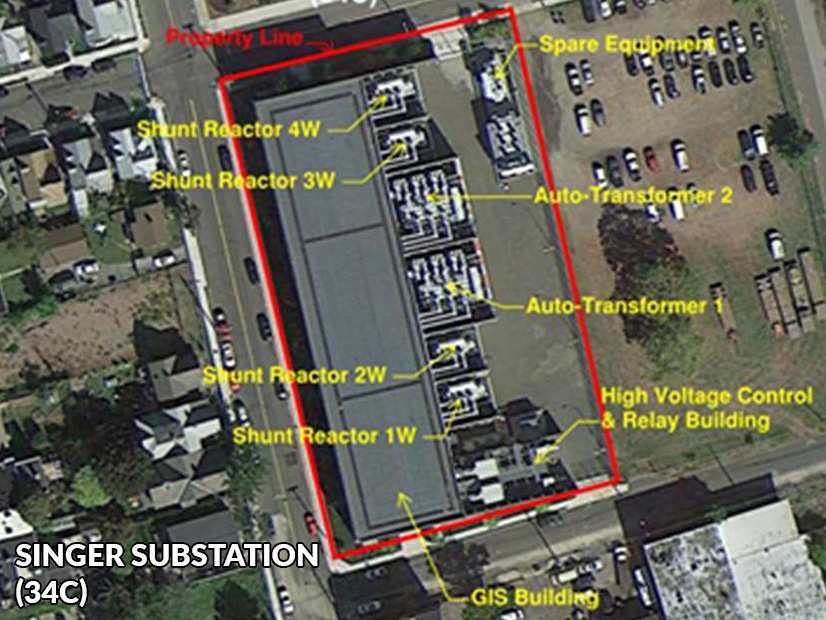UI Moving Ahead with Substation Floodwall in Bridgeport
United Illuminating (UI) told the ISO-NE Planning Advisory Committee on Wednesday that it intends to construct a floodwall protection system at the 345-kV Singer substation in Bridgeport, Conn., even as the cost estimate had nearly doubled from when it was first introduced in 2016.
A few substations flooded during hurricanes Irene and Sandy in 2011 and 2012, respectively. As a result, UI performed a coastal substation flood mitigation study that identified Singer as one of five substations at risk of failure from a 100-year flood event.
The project includes a floodwall reinforcement of the existing building, as well as an upgraded drainage system. The 2016 cost estimate was $12.9 million, though now it has ballooned to approximately $24 million based on updated construction pricing, according to Katelyn Davenport, lead engineer for transmission and substation asset strategy and planning at Avangrid (NYSE:AGR), UI’s parent company.
Davenport added that UI’s work would also be independent of the Bridgeport Area Resiliency Project under development and funded by a grant from the U.S. Department of Housing and Urban Development.
While Singer is located within the area that is part of the resilience project, there is insufficient detail to confirm if the project would adequately protect the station from flooding at this time, Davenport said. UI’s other prominent reasons for moving ahead include Singer’s importance to the New England bulk electric system and the risk of catastrophic flooding, which is still high 10 years after Irene and Sandy. The resiliency project also remains partially funded, and it does not meet ISO-NE’s recommended design floor elevation.
UI will get a transmission control agreement, and Davenport said it is ready to award construction contracts by the third quarter of this year and begin construction by the second quarter of 2022, with an in-service date at the beginning of 2023.
Additional Tx Pilot Study Results, Proposed Changes to Assumptions
ISO-NE shared summary results from its “Transmission Planning for the Clean Energy Transition” pilot study, which tested grid performance assumptions under high renewable penetration scenarios and quantified the tradeoffs between transmission investment and less system flexibility. The results, which could also inform future transmission needs assessments, included:
- No potential needs were identified as a result of the proposed assumptions, and results of generator outage sensitivities were similar to results of comparable needs assessments.
- No potential needs were identified related to low-voltage violations, though needs may arise from high-voltage results under minimum-load conditions. Under the future system predictions used for the study, potential steady-state high-voltage needs identified can likely be resolved for a cost of approximately $50 million.
- Initial analysis revealed the potential for needs related to the performance of distributed energy resources during and after transmission system faults. Any future stability analysis in needs assessments will depend on answering questions about the details of DER modeling and performance criteria.
- Stability concerns are not easily observed or addressed in real time. Large amounts of DER could trip or enter temporary power reduction during a significant number of hours per year. According to the study, to the extent that needs do exist related to stability, they will need to be addressed through system upgrades.
The RTO also proposes adopting the assumptions used in the study for needs assessments, solutions studies and competitive requests for transmission solutions. These assumptions are not likely to lead to thermal or steady-state low-voltage needs that are more extensive than with today’s assumptions. Steady-state high-voltage needs are not overly severe, and addressing them is relatively inexpensive.
Ongoing transient stability work regarding the modeling of DER and performance criteria will continue but will not affect assumptions on resource availability. The assumptions will ensure the continued reliability of the New England transmission system with increasing levels of clean, distributed and intermittent resources.
Draft and final reports documenting the analysis performed in the study are expected to be published by the end of the year.


